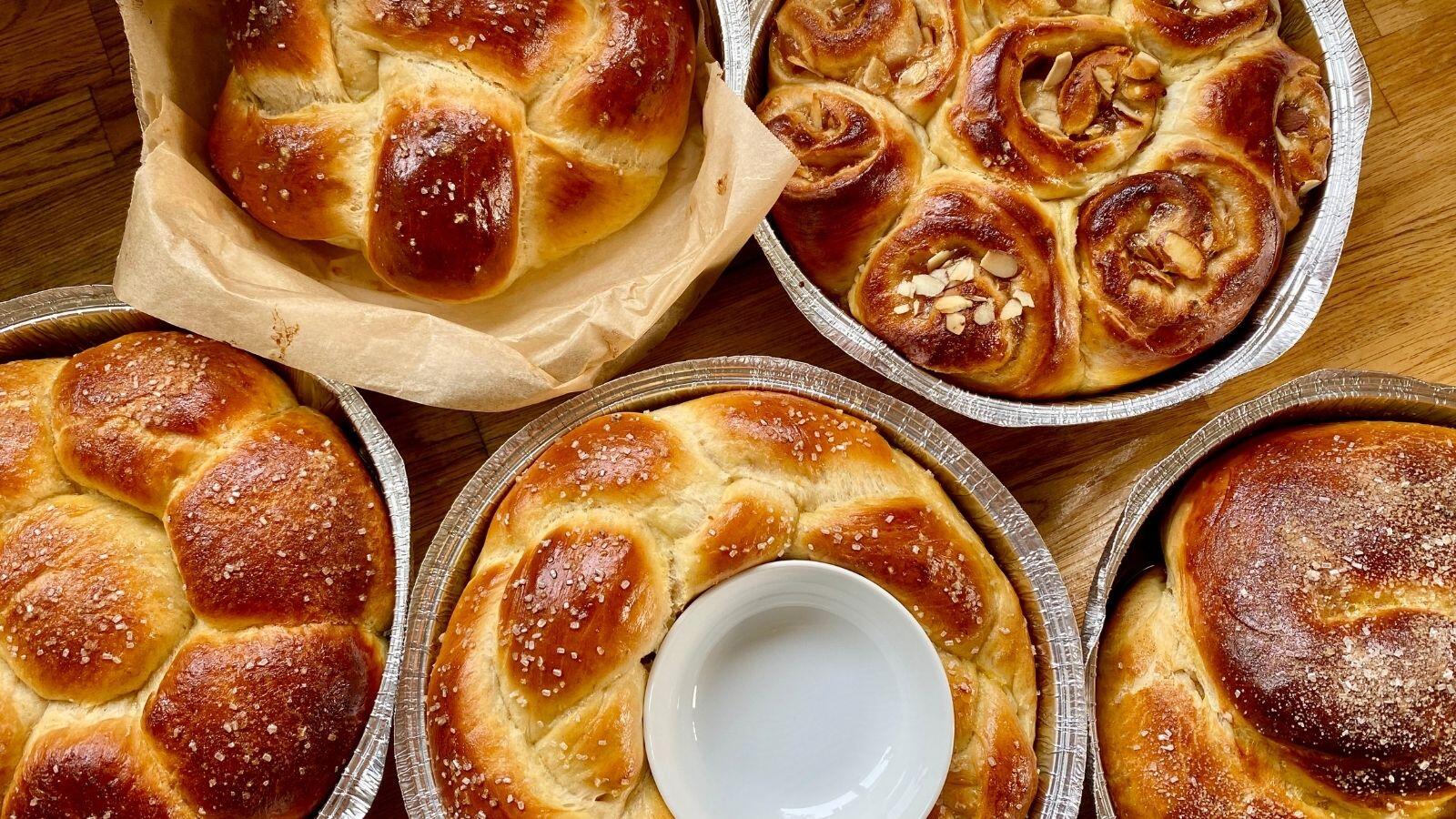While the core rituals of some Jewish holidays are observed at home, the central observance of Rosh Hashanah takes place in the synagogue. The holiday’s most prominent ritual, the blowing of the shofar, is traditionally done in synagogue (though it can be done at home too and does not require a minyan). Rosh Hashanah also features a large corpus of prayers that are also typically recited in the synagogue (though many of those too can be said at home.)
If observing Rosh Hashanah in an organized Jewish community isn’t an option, don’t fret. Whether with friends and family or spending the holiday solo, here are 10 ways to mark the Jewish new year outside of synagogue.
1. Engage in chesbon hanefesh
This Hebrew phrase (pronounced KHESH-bone hah-NEH-fesh) literally means “an accounting of the soul” and refers to the process of self-reflection that is traditionally done throughout the month of Elul in the run-up to Rosh Hashanah. This process is conducted in preparation for Rosh Hashanah when, Jewish tradition teaches, all of humanity is called to account and a divine judgment is issued.
Jewish tradition doesn’t dictate any one correct way to engage in chesbon hanefesh. Some people do guided journaling in the weeks leading up to Rosh Hashanah, while others may meditate or pray each day.

Help us keep Jewish knowledge accessible to millions of people around the world.
Your donation to My Jewish Learning fuels endless journeys of Jewish discovery. With your help, My Jewish Learning can continue to provide nonstop opportunities for learning, connection and growth.
READ: Nine books to prepare you for the High Holidays
2. Explore virtual High Holiday classes
Many synagogues and Jewish organizations — including My Jewish Learning — offer virtual classes around the High Holidays.
Take a deep dive into Sephardi Selichot melodies, learn to cook traditional holiday foods and more through our on-demand holiday classes.
3. Make an effort to connect with loved ones
The High Holidays can be isolating without a physical community, but connecting to friends and family around the world has never been easier. The beginning of a new Jewish year is the perfect time to catch up with friends by phone, video chat or text. Some holiday rituals, like the Rosh Hashanah seder or Tashlich, can even be adapted to be done with friends and family over video chat.
One traditional way to connect with friends and family around the High Holidays is by sending a Rosh Hashanah greeting. This tradition likely dates to the 14th century and became even more popular after the invention of postcards in the late 1860s. In contemporary times, postcards, greeting cards, e-cards, text messages, email and social media messages are all popular ways to send loved ones and friends new years greetings.
4. Blow your own shofar
The shofar is often blown at synagogue each day during Elul, as well as during Rosh Hashanah and Yom Kippur services. You can carry on this ancient tradition by blowing the shofar for yourself or your family/friends wherever you are. If you don’t live near a Jewish community, you can purchase your own shofar from a Judaica website or Amazon.
Click here to learn how to blow a shofar.
5. Engage in the home-based holiday rituals
Some High Holiday traditions take place in the home. Like Shabbat and many other Jewish holidays, Rosh Hashanah and Yom Kippur both begin by lighting holiday candles. A festive dinner often follows and includes reciting Kiddush, Hamotzi and other special holiday blessings.
Click here for more information on lighting candles and the Rosh Hashanah meals.
6. Eat Rosh Hashanah foods
If hosting or attending a Rosh Hashanah meal is inaccessible, the holiday’s traditional foods can still be enjoyed. Baking round challah, dipping apples in honey and eating fruits like pomegranates and figs are all common ways to celebrate the Jewish new year. Find dozens of Rosh Hashanah recipes here.
READ: All of your round challah questions, answered by The Nosher
7. Eat new fruits
On the second night of Rosh Hashanah, it is common to eat a fruit hat you have not tasted for a long time. The custom originally developed as a technical solution to a legal difficulty surrounding the recitation of the Shechehiyanu blessing on the second day of the holiday.
Traditionally, the new fruit is introduced during Rosh Hashanah dinner on the second day. The blessing for fruit is recited, followed by the Shechehiyanu blessing. The fruit is then eaten. Many people also choose to incorporate their fruit of choice into dishes at the meal.
Often, a pomegranate is used as the new fruit, as the pomegranate is said to have 613 seeds, corresponding to the 613 mitzvot (commandments). Any fruit can be used, and this ritual can be an excuse for scouting out the exotic fruit section of the produce department.
8. Host a Rosh Hashanah seder
Rosh Hashanah is commonly marked in Sephardi and Mizrahi Jewish communities with a seder. Like the more widely known Passover seder, blessings are recited in a specific order over simanim, or symbolic foods.
The Rosh Hashanah seder also includes festive songs, biblical readings and the recitation of piyyutim (liturgical poems). Unlike Passover, there isn’t a universal Haggadah that guides the Rosh Hashanah seder. Melodies, foods and traditions can vary among different communities and families. Learn how to organize your own Rosh Hashanah seder here.
9. Lead your own Tashlich ceremony
Tashlich (Hebrew for “casting off”) refers to the ritual in which Jews symbolically cast off any sins committed during the prior year by tossing bread crumbs into a running body of water. While Tashlich ceremonies are often organized by synagogues, there is no requirement to perform the ritual communally.
The ceremony can take place any time during the holiday season through Hoshanah Rabbah at the end of Sukkot. The rabbis of the Talmud preferred that Tashlich be done at a flowing body of water containing fish, because humankind cannot escape God’s judgment any more than fish can escape being caught in a net. Tashlich is ultimately a symbolic ceremony, so any body of water will do, even water running out of a hose or a faucet.
Find the full text of the Tashlich prayer here.
10. Stream synagogue services
Growing numbers of synagogues now live stream their services online. On the High Holidays, these streams are often restricted to synagogue members or cost money to watch — but not always. We rounded up synagogues across time zones and Jewish denominations that are streaming Rosh Hashanah and Yom Kippur services free-of-charge.




